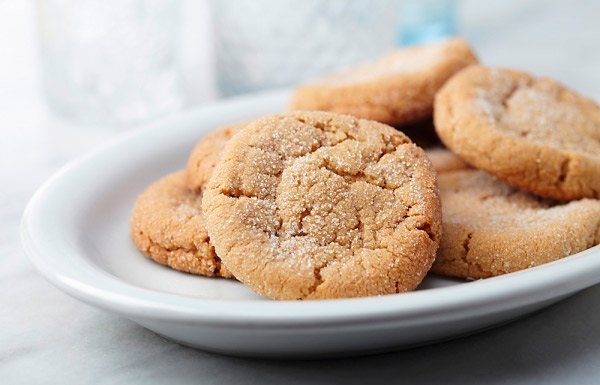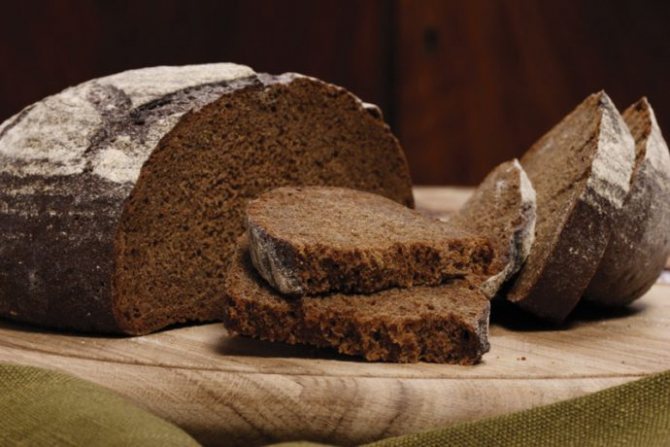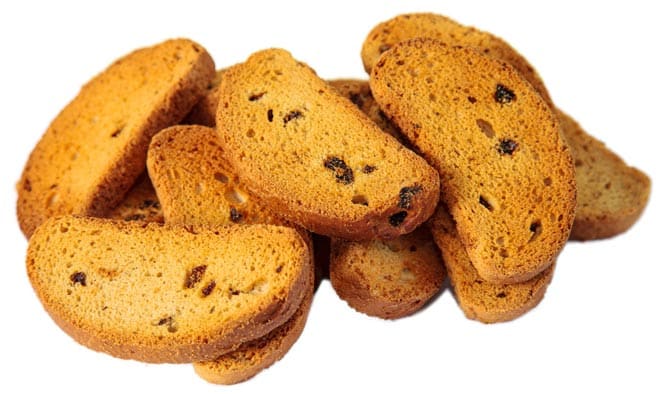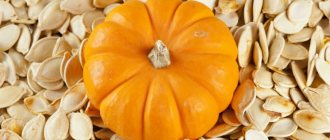Gastritis occurs when the stomach lining becomes inflamed. Regardless of the form of its occurrence, the most important point in treating the disease is diet. Compliance with it guarantees pain relief and improvement in general condition. You will have to give up a number of products altogether, including freshly baked bread. It is advisable to introduce crackers into the diet instead.
Bakery products for acute gastritis
In the acute form of the disease, the intestinal mucosa becomes inflamed. In the first days, complete fasting is indicated. Then vegetable broths and porridges cooked in water are gradually introduced into the diet.
Products are selected carefully. The patient must adhere to the following dietary rules:
- exclude products with coarse fibers from the menu;
- do not eat vegetables raw;
- limit the consumption of flour products;
- give preference to vegetable puree soups;
- do not consume herbs, spices, alcoholic beverages, grilled or frying dishes, sour fruits, sauces, lard, smoked meats, and fresh bread.
Freshly baked baked goods are difficult to digest in the stomach, causing increased production of hydrochloric acid and inflammation. If you do not adhere to proper nutrition, the disease becomes chronic, and any deviations from the usual lifestyle make themselves felt by heaviness in the stomach, soreness, and heartburn.
Read: Cutlets for gastritis - prepare them correctly.
What can you eat crackers with for gastritis inflammation?

During inflammatory processes, gastroenterologists do not prohibit the use of crackers with any delicacies and foods.
Solid foods can be eaten:
- With milk, sour cream, cheese, kefir, yogurt and other products (if there is no increased acidity and no ulcers).
- With juice, compote and tea (preferably with chamomile, St. John's wort, sage, linden, rosehip and mint).
- With raspberry, cherry, apricot and apple jam (if the acidity is not increased and pain does not bother you when consuming them).
- With broth, soup, gravy and boiled meat.
- With pasta, spaghetti, noodles and other products that do not contain hot seasonings and spices.
You can also eat crackers with poppy seeds, raisins and honey, if the gastritis stage is in the initial stage and the pain does not bother you so intensely. Gastroenterologists recommend not adding these products to your diet for now, as this will be a more reliable method of prevention and further treatment.
In order not to cause pain and other diseases, you should pay close attention to your diet and not yet introduce crackers with different flavors and fillings.
It is forbidden to eat salty crackers with chemical flavoring additives, because they corrode the gastric mucosa and can provoke the development of ulcerative wounds and polyps, and this can completely disrupt the functioning of the digestive system.

Is it possible to have bread for chronic gastritis?
With this form of the disease, the acidity level may be low or high.
If the secretion of gastric juice is reduced, the stomach takes a long time to digest food. Bread contains coarse fiber and a large amount of carbohydrates. Therefore, it refers to “heavy foods” of food. Only day-old bread made from the highest grade of wheat flour can be included in the diet. And even better are crackers made from it.
During the period of remission, you can eat baked goods made from wheat flour, including buns with chicken meat, vegetables, low-fat cottage cheese, and fruits.
Gastritis with high acidity causes unpleasant belching and heartburn. When eating bread, irritation of the mucous membrane begins and acid production increases. Therefore, a complete ban is introduced on butter products. However, you can add croutons to puree soup or jelly.
How to properly eat dry bread?
Crackers and dryings for gastritis are allowed for consumption. But you need to follow a number of simple rules:
- It is advisable to eat no more than 200 g of crackers per day;
- do not use crackers or dryers with hot seasonings or chemical additives that can cause gastrointestinal irritation;
- Do not consume in pure form, but wash down, soak or bread semi-finished products, for example, cutlets.
Crackers are recommended as food because they are easily digestible and rich in fiber. But moderation is important in nutrition for this form of the disease. You need to eat 4-5 times a day, but in small portions. With a properly organized diet, you can avoid other gastrointestinal diseases.
During exacerbation of gastritis and its chronic course, it is advisable to eat crackers as rarely as possible. Excessive amounts of them cause pain and burning in the stomach, can cause nausea and vomiting, and intestinal dysfunction.
What are the best crackers to eat?
Manufacturers prepare crackers with various additives: raisins, poppy seeds, nuts, salt, spices. When purchasing a product, you need to know which crackers are approved for use for stomach inflammation. Since it is difficult to find this product on the shelves without all sorts of additives, it is wiser to prepare it at home.
It is preferable to use wheat-rye or white unleavened bread for drying. White crackers are approved for use for various forms of gastritis. This method is the safest, since you yourself control the composition of the product and the process of its preparation.

The recipe is quite simple. Use wheat or rye unleavened bread, vegetable oil, and salt. The bread is cut into cubes, mixed with a small amount of butter and salt, shaking in a plastic bag to distribute the ingredients evenly.
Lay out on a baking sheet in one layer and dry in the oven at +150–180°C for about 10 minutes. Crackers are considered ready if they are covered with a golden crust on top and slightly dried inside.
There are other recipes for their preparation. The ingredients used are:
- 400 g of white stale bread;
- 1 tsp. salt;
- 50g melted butter;
- 50 g olive oil.
The bread is cut into cubes up to 1 cm thick. In a separate bowl, mix the oils and salt. The mixture is poured into the bread and spread evenly over the surface. Place the bread cubes in a preheated oven for 10–15 minutes. Used in soups, salads, as a breading when chopping. The result is delicious, butter-soaked crackers that are harmless for stomach problems.
The ideal option is to completely avoid salt and oil. For lovers, you can dry the butter bread and sprinkle it with vanilla. You will get vanilla crackers. For gastritis, you can eat dried fruits, which are usually prepared and sold without additives.
Methods and rules of use
Shredded dried bread is used in the preparation of steamed dishes from meat and vegetables. Cutlets, meatballs, steamed broccoli are prepared according to the recipe with breading. It can also be added to broth or soup. Such dishes are included in the menu with proper nutrition.
If pain or discomfort occurs when consuming this product: heartburn, belching, heaviness, then it is better to abandon it completely and consult a gastroenterologist, since these symptoms may be the result of another disease.
For stomach inflammation, use crackers:
- sweet or vanilla;
- lightly salted with added butter;
- with raisins or poppy seeds.

Dry foods can be eaten with liquid. They dissolve quickly enough and are well absorbed by the stomach. Bread can be eaten if it is dried, excluding fresh baked goods.
What kind of bread is healthy?
- The product is prepared from various ingredients, according to different recipes, with the addition of various additives.
- Bread made from rye flour is considered very healthy due to its beneficial composition and nutritional properties. Improves the functioning of the gastrointestinal tract. But in case of acute gastritis, it is excluded from the diet, as it causes stagnation and takes a long time to digest.
- A bran product improves intestinal motility and eliminates fermentation processes. But in case of stomach disease, it injures the mucous membrane, which can lead to the formation of ulcers.
- Bread made from wheat flour is one of the products that are not contraindicated for gastritis. However, it can only be consumed in the form of crackers.
- The crispbreads do not contain coarse fibers, are made from natural ingredients, and the grains are easily digestible. Can be introduced into the diet in limited quantities. It is necessary to choose a product without additives.
- Yeast-free bread is considered the most healthy. Experts advise including it in your daily diet, replacing other baked goods. Bread dough is primarily prepared using water and flour. The types of dough differ depending on the additional ingredients. It is no coincidence that our ancestors prepared sourdough bread from kefir, curdled milk, barley, or simply plain water. This bread has the most beneficial properties. It is not contraindicated for gastritis, but freshly prepared product should not be consumed.
This is interesting: The benefits and harms of pectin for the body.
Types of crackers
Bread is dried at home and on an industrial scale. The product differs from fresh baked goods in its minimal moisture content (less than 10% of volume). There are two types of classic crackers:
- Butter . The products are baked from sweet dough with the addition of flavoring ingredients and dried.
- Simple . Crackers are prepared from wheat, rye, bran and other types of bread.
Snacks (light snacks) are distinguished separately. This is a new type of crackers made from rye or wheat flour, seasoned with flavor enhancers and flavorings.
Butter crackers are prepared independently from leftover baked goods (muffins, biscuits) or bought in confectionery departments. The composition of the factory product includes additives: vanilla, lemon zest, nuts, raisins, sugar coating.
Is it possible to eat bread crumbs with gastritis? Doctors allow the use of the product during stable remission. The baked goods contain yeast and sugar, which react with hydrochloric acid in the gastric juice. In case of inflammatory manifestations, sweet croutons will increase the intensity of symptoms. Ready-made nut, lemon, vanilla crackers for gastritis are allowed in limited quantities during the latent period of the disease.
Dried pieces of rye and wheat bread are used:
- for a snack;
- in salads;
- as an addition to soups in the form of croutons;
- for breading vegetable, fish, meat balls and cutlets.
Gastroenterologists recommend dry crackers for gastritis as a replacement for fresh bread in the patient’s diet. The product is easily digested in the stomach and intestines, is well absorbed by the body, and does not cause heaviness or flatulence.
Is it possible or not to use crackers from the snack category for gastritis? Absolutely not. The product contains a lot of salt and artificial additives that have an ulcerogenic (irritating, ulcer-forming) effect on the gastrointestinal mucosa.
Useful properties of bread
If you compare the bread with ordinary bread, they differ in the following beneficial properties:
- They contain much more minerals, vitamins and other valuable substances. And all because such a product is made from low-grade flour (corn, buckwheat and others), which retains much more useful substances that are necessary for human health.
- Crispbread is a good source of protein and fiber. Protein is easily absorbed by the body, and fiber is needed for internal systems and human organs.
- There is no yeast in the bread. Therefore, people who suffer from heartburn can also eat them.
- This product contains a lot of dietary fiber. It is good for the stomach.
All of these above-mentioned properties of bread are certainly useful for people with gastritis, and therefore it is allowed to eat bread with such an illness, but in moderation and not during an exacerbation of the disease.
Crispbread for gastritis with high and low acidity. Proper nutrition for gastritis
- September 1, 2018
- Gastroenterology
- Ksenia Stepanishcheva
In the store you can find such a product as bread. They are natural, dietary and safe, so they are recommended for many diseases. The products are rich in useful substances necessary for every person. Is it possible to eat bread with gastritis? This article will tell you in the article.
Benefit
Compared to regular bread, the benefits of bread are as follows:
- The products are rich in minerals, vitamins and other valuable components. The product is created from low-grade flour (corn, buckwheat), which retains many valuable substances that are necessary for the human body.
- Crisps are considered a source of protein and fiber. The first component is easily digestible. Fiber is required for the normal functioning of internal organs and body systems.
- The product does not contain yeast, so it is ideal for people who suffer from heartburn.
Due to their properties, bread will be a useful product for gastritis. The main thing is to use them in moderation and not during an exacerbation of the disease. Rye bread is considered the healthiest, so they are used in a healthy diet.
Compound
The benefits of bread are determined by the composition of the product. The products contain cereals and water. The product may also consist of:
- from bran;
- sprouted cereal grains;
- crushed cereals;
- lecithin;
- seaweed, prunes, raisins.
The composition of the bread includes:
- vitamins E, A, B1, B2, PP, beta-carotene;
- microelements - calcium, magnesium, iron, phosphorus, potassium, sodium.
Doctors' recommendations
Many gastroenterologists believe that if you have gastritis, bread should be consumed with caution. With this disease, it is necessary to carefully approach the choice of bakery products. For example, for gastritis, fresh and hot bread is contraindicated, since the products can worsen the person’s condition.
For gastritis, bread can be consumed no more than 100 g per day and not during an exacerbation of the disease, since dietary fiber can cause injury to the walls of the diseased organ. And it will be difficult for such a stomach to process food.
Product selection
When purchasing, you must carefully read the composition of the product. According to the recipe, the bread should contain natural ingredients, but some manufacturers add preservatives and stabilizers to them. For gastritis, it is better to choose bread made from barley.
Products made from whole grains or coarse flour are brittle and crunchy. It is important that they retain their shape and do not crumble. The color of the product should be uniform, which indicates high-quality manufacturing. The breads are stored for a long time. Whole grain products have a shelf life of up to 18 months, and products made from wholemeal flour have a shelf life of up to a year.
Products must be dry and well baked. If it contains baking soda, then the product belongs to the healthy category. It may contain sesame, sunflower, and flax seeds. These are quality supplements. The packaging must have the PCT (Rostest) mark, indicating that the product is safe.
Kinds
Depending on the type of grain crop used for the manufacture of products, the following products are distinguished:
- rye bread is the most popular in a healthy diet;
- rice - suitable for people with skin problems and kidney diseases;
- wheat ones are used for problems with the stomach and intestines;
- Buckwheat is suitable for those with a tendency to be overweight, as well as for anemia and diabetes;
- combined include several types of grain, such as wheat and rye;
- multigrain is ideal for everyone.
Nowadays you can find products from different manufacturers in stores. It is important to adhere to the rules of choice in order to purchase high-quality bread that is suitable for medicinal purposes.
Use
Bread is suitable for gastritis with high acidity, as well as low acidity. Experts recommend using them during weight loss. You just need to eat them in moderation to achieve the desired results:
- You should consume no more than 5 slices per day. This is enough to get the required amount of fiber.
- Bread goes well with vegetables, sour cream, and butter. They are also consumed in the diet with eggs, legumes, and nuts. But combinations with fish, poultry, meat, milk, and fruits will not be beneficial.
- The products should be used as a healthy snack, for example, for an afternoon snack. You should not eat them for dinner, as absorption will take a long time.
- If you include crispbread in your diet, then bread should be excluded, since all together it will not be beneficial.
The product is stored in a cool, dry place. Their shelf life is quite long, so you can buy with a reserve.
Whole grains
Whole grain products have a high level of ash content, a lot of fatty acids, and dietary fiber. That is why such products are considered the most useful. Whole grain flour includes microorganisms that are needed to preserve nutrients.
The breads are prepared using an extruder. This is a special device that provides heat treatment of cereals. The procedure takes a few seconds. Although in this way the natural characteristics of the product change, valuable substances are partially destroyed, but without processing the body will not be able to digest the product.
Harm
Not everyone knows about the technology for manufacturing quality products, so they buy bread made using extrusion, that is, standard baking. This product contains a lot of calories, so it should not be consumed if you have problems with digestion or excess weight.
The composition should not contain yeast, premium flour, starch or other additives. Harm occurs from unlimited use of this product. The benefits will be minimal, so you won’t be able to improve your health. You need to know exactly which products are suitable for your body.
Harm will occur if the drinking regime is not followed. Digestion and absorption of bread is ensured by drinking 2 liters of water per day. With a lack of fluid, digestive problems and constipation are observed. Some people develop allergies after consuming the product. This is due to intolerance to the components of the product. You should not eat them if itching, redness or rash appears on the skin.
Age restrictions also apply. The product should not be consumed by children under 3 years of age, as well as by elderly people over 65 years of age, otherwise the bread will be difficult to digest. In the absence of contraindications, the product can be included in the daily diet.
Source: https://SamMedic.ru/333437a-hlebtsyi-pri-gastrite-s-povyishennoy-i-ponijennoy-kislotnostyu-pravilnoe-pitanie-pri-gastrite
Doctors' recommendations
Many gastroenterologists believe that if you have gastritis, bread should be consumed with caution. With this disease, it is necessary to carefully approach the choice of bakery products. For example, for gastritis, fresh and hot bread is contraindicated, since the products can worsen the person’s condition.
For gastritis, bread can be consumed no more than 100 g per day and not during an exacerbation of the disease, since dietary fiber can cause injury to the walls of the diseased organ. And it will be difficult for such a stomach to process food.
Breadcrumbs for gastritis
Breadcrumbs occupy a special place in the diet for gastritis. They are recommended as an extremely useful food additive in the preparation of vegetables, diet cutlets and meatballs. The presence of breadcrumbs in steamed dishes contributes to the high-quality digestion of meat and serves as an additional source of saturation for the body.
But when purchasing this product, you need to carefully study the composition: excessive chemical additives can cause significant harm. Therefore, it is better to prepare them yourself - grind ordinary crackers in any convenient grinder - blender, meat grinder, coffee grinder.

Thus, for gastritis, the most preferable option is crackers made from unleavened wheat bread. Patients with any type of this disease can afford them. It is ideal if the slices of bread are dried on their own.
This approach makes it possible to control the quality of the original bread product and allows you to select the bread for crackers that best suits your personal dietary needs.
Product selection
When purchasing, you must carefully read the composition of the product. According to the recipe, the bread should contain natural ingredients, but some manufacturers add preservatives and stabilizers to them. For gastritis, it is better to choose bread made from barley.
Products made from whole grains or coarse flour are brittle and crunchy. It is important that they retain their shape and do not crumble. The color of the product should be uniform, which indicates high-quality manufacturing. The breads are stored for a long time. Whole grain products have a shelf life of up to 18 months, and products made from wholemeal flour have a shelf life of up to a year.
Products must be dry and well baked. If it contains baking soda, then the product belongs to the healthy category. It may contain sesame, sunflower, and flax seeds. These are quality supplements. The packaging must have the PCT (Rostest) mark, indicating that the product is safe.
Biscotti, biscuits, crackers...
Showcases and counters of bakery and confectionery departments offer a huge variety of crackers and their derivatives. The crackers themselves are classic (made from white or rye bread with a neutral taste), vanilla (based on buns and loaves), and mustard. They are complemented by a rich assortment with all kinds of additives (raisins, sesame seeds, candied fruits, poppy seeds, cereal grains, seeds, etc.).
Russian crackers also have foreign analogues:
- Biscotti - dried slices of biscuit from Italian cuisine;
- Galettes are small dry flatbreads with French ancestry, today shaped like cookies;
- Cracker is a popular dry snack, but contains fat. It has a pronounced sweetened or, on the contrary, salty taste;
- Sushki is a bakery rusk product of Slavic cuisine: Polish, Belarusian, Russian, Ukrainian. Dryers have a special baking technology, different from cracker production.
Whole grains
Whole grain products have a high level of ash content, a lot of fatty acids, and dietary fiber. That is why such products are considered the most useful. Whole grain flour includes microorganisms that are needed to preserve nutrients.
The breads are prepared using an extruder. This is a special device that provides heat treatment of cereals. The procedure takes a few seconds. Although in this way the natural characteristics of the product change, valuable substances are partially destroyed, but without processing the body will not be able to digest the product.
Historical reference
It is difficult to specify when the first cracker was made. But the connection with the history of bread baking, with primitive flatbreads cooked on hot stones, is obvious to anyone. And most likely, our distant ancestor accidentally discovered dried bread, which tastes no worse than fresh bread and can be stored for a long time. Due to this, crackers gradually became the traditional food of warriors and distant travelers.
The first to describe the product from a scientifically accurate point of view was the prominent culinary historian William Pokhlebkin. By its definition, this is a bread product that has been baked and dried for the second time for storage or further use in the preparation of culinary dishes. He also emphasized the main feature of crackers from his bakery counterparts - low humidity, not exceeding 49%.
Since Pokhlebkin was an adherent of the domestic culinary tradition, in his works he promotes the “Russian” version of the appearance of crackers and their mass production. There is a legend that in the middle of the 19th century one of the Easter days turned out to be unusually hot. The pre-baked Easter cakes quickly dried out, but were still eaten, since in the Orthodox tradition the sacred loaf is eaten down to crumbs.
Problems that bread can help solve
Bread consists of grains and salt. Sometimes salt is not added. On sale they are found from one type of cereal or from a mixture. They come in different shapes - round, square, reminiscent of pita bread, etc. They are produced by different companies. Information about what is included in their composition, what substances and in what quantity, contact details for the company that produces them is always indicated on the packaging. Having decided to buy this particular product, wanting to eat them more often, you can end up confused. Which type is worth choosing for a diet, and which makes no sense? Which breads are best for gastritis?








